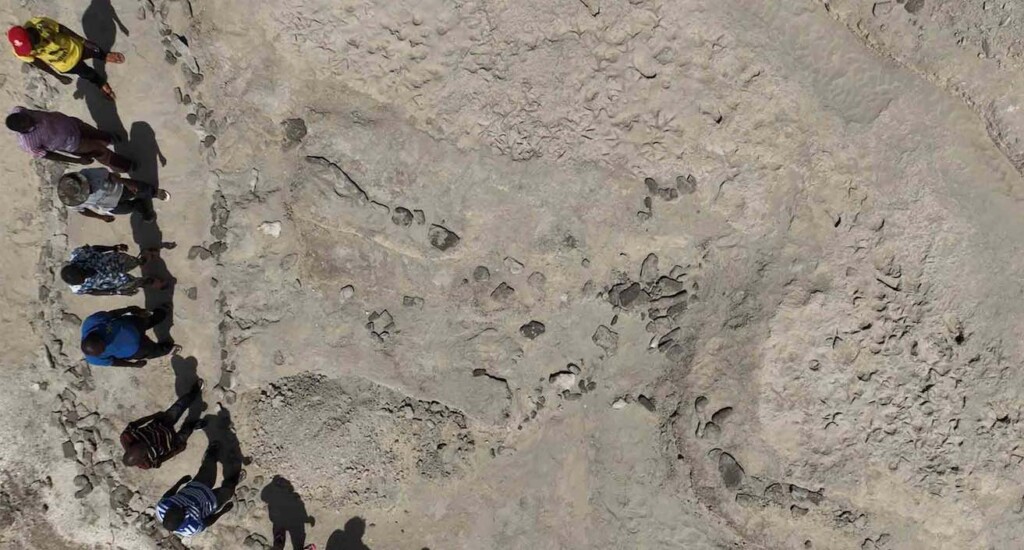
Footprints dating back 1.5 million years made by two different species of human ancestors have been found at the same spot—a fossil first—and the individuals likely passed within an hour from each other.
More than a million years ago, on a hot savannah teeming with wildlife near the shore of what would someday become Lake Turkana in Kenya, two completely different species of hominins may have passed each other as they scavenged for food.
Scientists know this because they have examined 1.5-million-year-old fossils unearthed here and have concluded they represent the first example of two sets of hominin footprints made about the same time on an ancient lake shore.
The discovery will provide more insight into human evolution and how species cooperated and competed with one another, said scientists who explained that “hominin” is a newer term that describes a subdivision of the larger category known as hominids. Hominins includes all organisms, extinct and alive, considered to be within the human lineage that emerged after the split from the ancestors of the great apes, believed to have occurred about 6 million to 7 million years ago.
The study, published Thursday in the journal Science, offers hard proof that different hominin species lived contemporaneously in time and space, overlapping as they evaded predators and weathered the challenges of safely securing food in the ancient African landscape. Making the footprints were the two most common human species of the Pleistocene Epoch—Homo erectus and Paranthropus boisei, the researchers said.
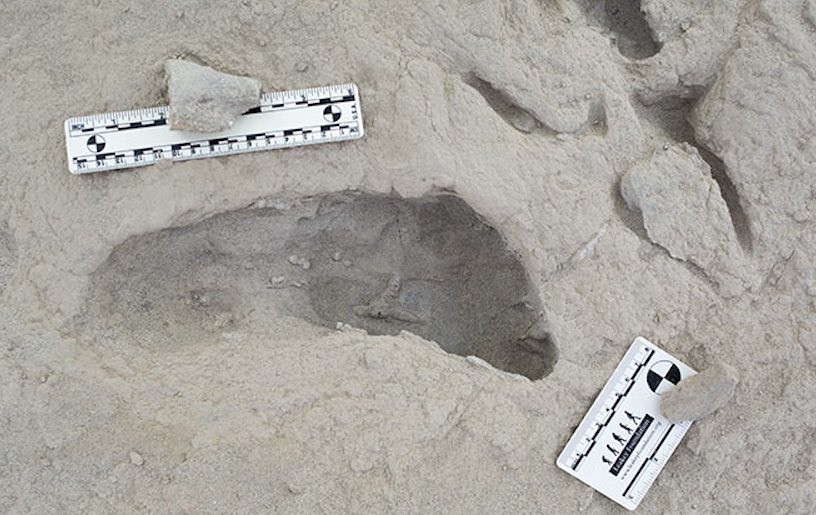
“Their presence on the same surface, made closely together in time, places the two species at the lake margin, using the same habitat,” said Rutgers University Professor Craig Feibel, an author of the study.
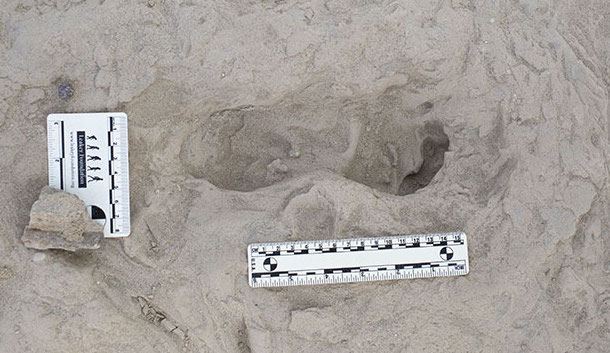
Feibel, who has conducted research since 1981 in that area of northern Kenya, a rich fossil site, applied his expertise in stratigraphy and dating to demonstrate the geological antiquity of the fossils at 1.5 million years ago. He also interpreted the depositional setting of the footprint surface, narrowing down the passage of the track makers to a few hours, and showing they were formed at the very spot of soft sediments where they were found.
If the hominins didn’t cross paths, they traversed the shore within hours of each other, Feibel said.
“Fossil footprints are exciting because they provide vivid snapshots that bring our fossil relatives to life,” said Kevin Hatala, the study’s first author, and an associate professor of biology at Chatham University in Pittsburgh, Pennsylvania.
AMAZING: Fossil of Neanderthal Child with Down’s Syndrome Hints at Early Humans’ Compassion
Prof. Hatala has been investigating hominin footprints since 2012, and says they reveal how living individuals, millions of years ago, were moving around their environments and potentially interacting with each other, or even with other animals.
“That’s something that we can’t really get from bones or stone tools.”
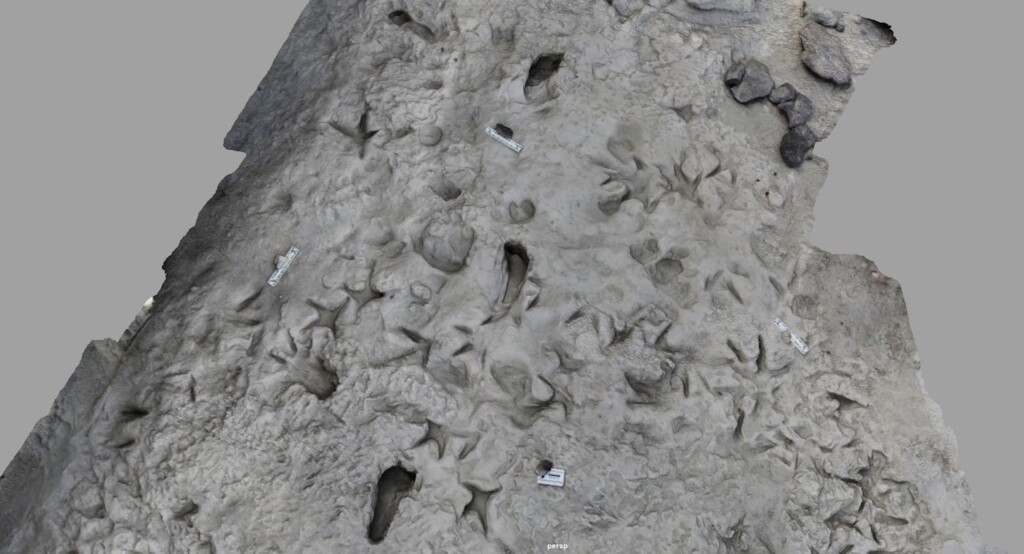
While skeletal fossils have long provided the primary evidence for studying human evolution, new data from fossil footprints are revealing fascinating details about the evolution of human anatomy and locomotion, and giving further clues about ancient human behaviors and environments.
An expert in foot anatomy, Hatala found the prints reflected different patterns of anatomy and locomotion. He and several co-authors distinguished one set of footprints from another using new methods they recently developed to enable them to conduct a 3D analysis.
“In biological anthropology, we’re always interested in finding new ways to extract behavior from the fossil record, and this is a great example,” said Rebecca Ferrell, a program director at the National Science Foundation who helped fund this portion of the research. “The team used cutting-edge 3D imaging technologies to create an entirely new way to look at footprints, which helps us understand human evolution and the roles of cooperation and competition in shaping our evolutionary journey.”
CHECK OUT: Prehistoric ‘Axe Factory’ Found in Britain Triggers Search for More Artifacts
Ms. Feibel described the discovery as “a bit of serendipity” for researchers in 2021 organized by Louise Leakey, a third-generation paleontologist.
Feibel noted it had long been hypothesized that these two human species coexisted. According to fossil records, Homo erectus, a direct ancestor of humans, persisted for 1 million years more. Paranthropus boisei, however, went extinct within the next few hundred thousand years (but scientists don’t know why).
Both species possessed upright postures, bipedalism, and were highly agile. Little is yet known about how these coexisting species interacted, both culturally and reproductively.
DID YOU KNOW? Humble Stick Reveals Wealth of Information About Extinct Heidelberg Hominids as Hunters and Craftsmen
The footprints are significant, Feibel said, because they fall into the category of “trace fossils”, which cannot be moved—not part of an organism, but offering important evidence of behavior.
“This proves beyond any question that not only one, but two different hominins were walking on the same surface, literally within hours of each other,” Feibel said. “The idea that they lived contemporaneously may not be a surprise. But this is the first time demonstrating it. I think that’s really huge.”
SHARE THE AMAZING SCIENCE With Paleo-Lovers on Social Media…




















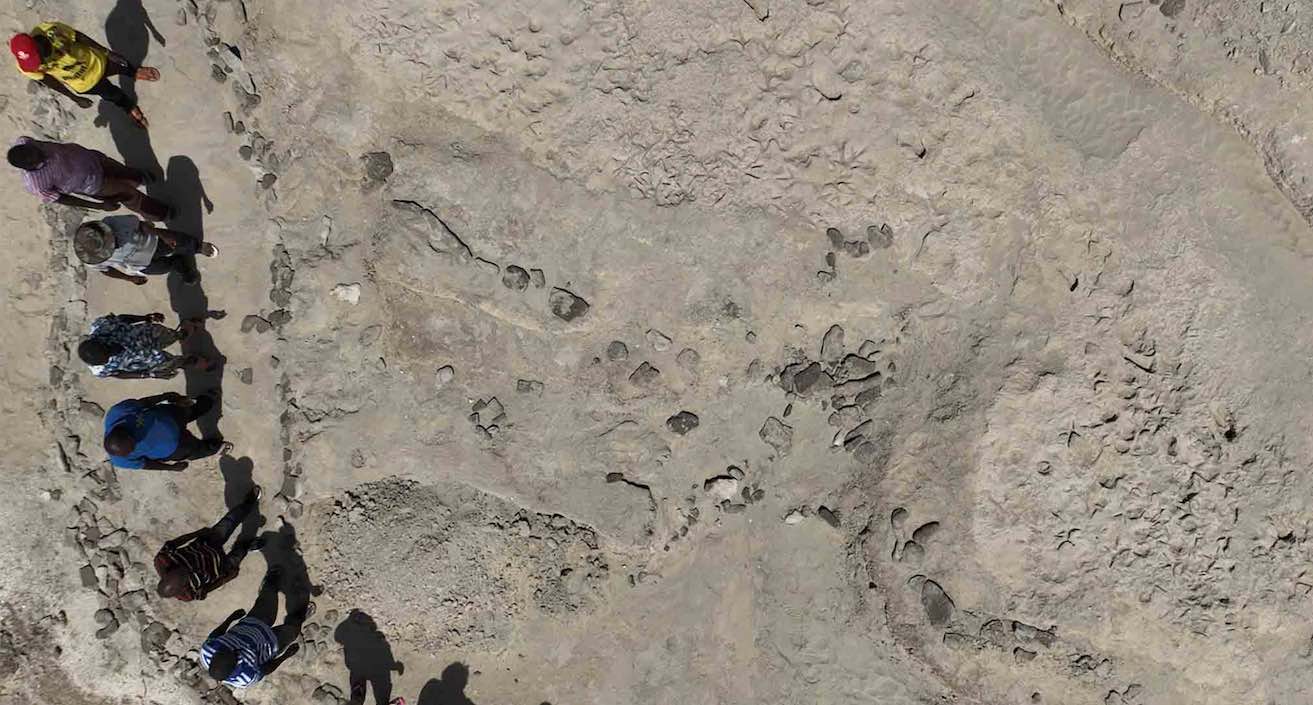
Most likely one was hunting the other. We know we are easier prey than many other animals – not as fast – not as alert – easy to fool.
Thoughts?